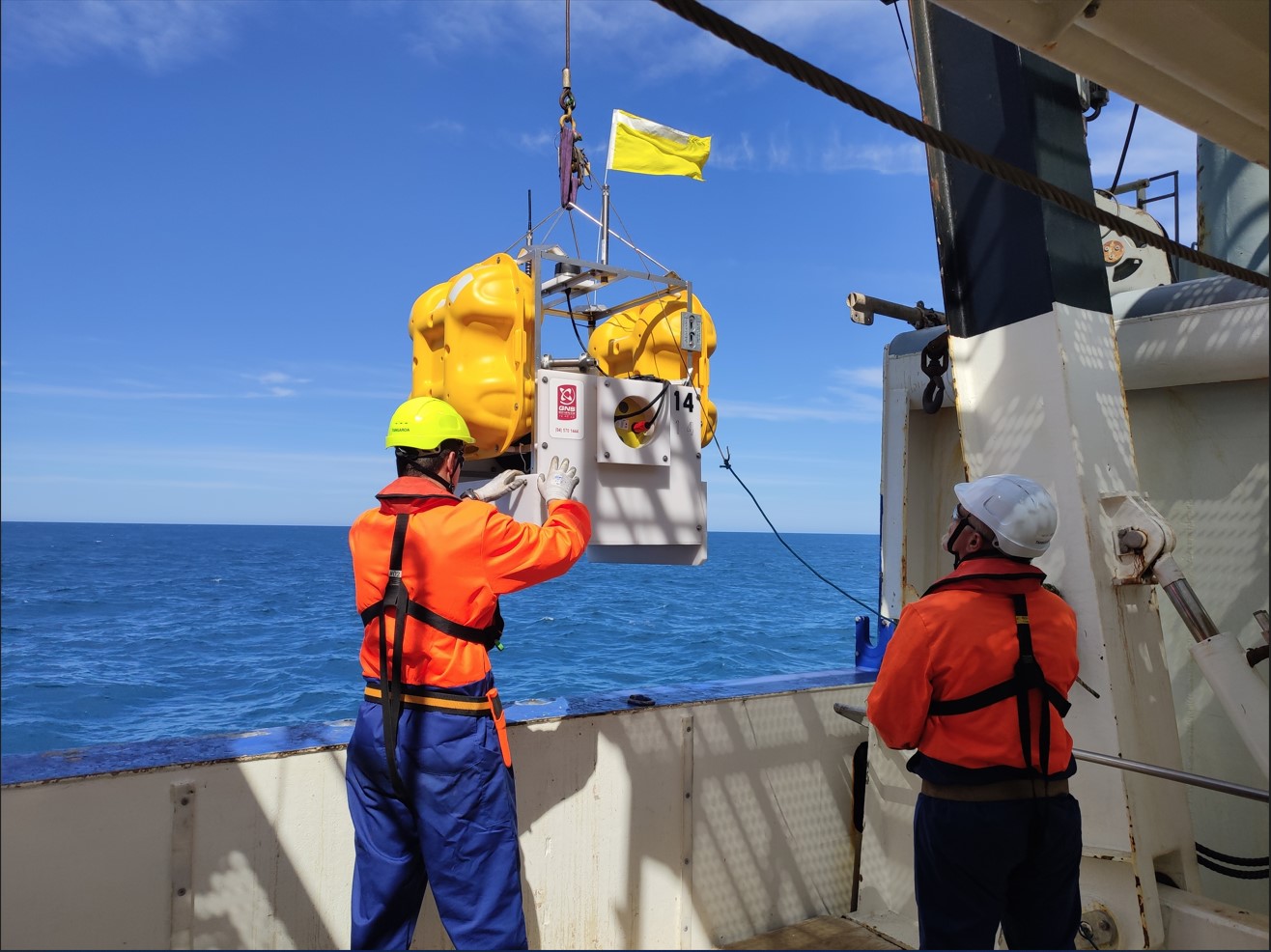
Revelle Blog #3 What is pore water?
Dr. Claire McKinley is a Research Associate from the University of Washington. She is currently working and reporting on the research occurring along the Hikurangi subduction zone on board the US research vessel Revelle.
One of the main goals of this voyage is to measure and study pore water to figure out trapped water’s role in allowing slow slip earthquakes to occur. Slow slip earthquakes is when movement between the tectonic plates occurs slowly across the subduction zone, over a period of weeks to months, rather than suddenly in a large earthquake.
1) Pore water is the water that fits within the small spaces between grains of sediment. Some of it gets trapped as sediment
2) Pore water is the reason that soil stays wet for a few days after you’ve watered a plant. The water is held within the spaces in the soil. You may have noticed that the water that comes out of the bottom of the pot is yellowish, and that is because it has interacted with the soil and the organic material within the soil and the water’s composition has changed. Because the marine sediment is always underwater it can contain a lot of water.
3) You can think of pore water as the blood of the sediment. We take a blood test to see how healthy a person is. The measuring the characteristics of pore water gives you information about the history of processes occurring in the sediment. We can get a lot of information from analyzing pore water.
4) The characteristics of the pore water changes the deeper in the sediment you go. Like soil sediment at the bottom of the ocean can be compacted, so it will hold less water. The sediment directly under the water is wet and fluffy, as it gets deeper the sediment becomes more compact under its own weight.
5) As the Pacific plate is pulled under the Australian plate the sediment that has accumulated on the ocean floor piles up. We are collecting samples on the sediment pile.
6) A portion of the sediment gets swept up with the oceanic crust and is pulled under with the plate. As the sediment dives deeper it experiences even more pressure. This compresses the sediment, which releases more water into the pore spaces. It is this process that we think might influence the way energy between the two plates is released, and because the composition of the pore water is changing we should be able to measure it as it happens.
Back to Slow-Slip Earthquakes and Fluid Flow at the Hikurangi Subduction zone
Disclaimers and Copyright
While every endeavour has been taken by the East Coast Lab Hikurangi Subduction Zone M9 to ensure that the information on this website is
accurate and up to date, East Coast Lab Hikurangi Subduction Zone M9 shall not be liable for any loss suffered through the use, directly or indirectly, of information on this website. Information contained has been assembled in good faith.
Some of the information available in this site is from the New Zealand Public domain and supplied by relevant
government agencies. East Coast Lab Hikurangi Subduction Zone M9 cannot accept any liability for its accuracy or content.
Portions of the information and material on this site, including data, pages, documents, online
graphics and images are protected by copyright, unless specifically notified to the contrary. Externally sourced
information or material is copyright to the respective provider.
© East Coast Lab Hikurangi Subduction Zone M9 - www.eastcoastlab.org.nz / +64 6 835 9200 / info@eastcoastlab.org.nz
